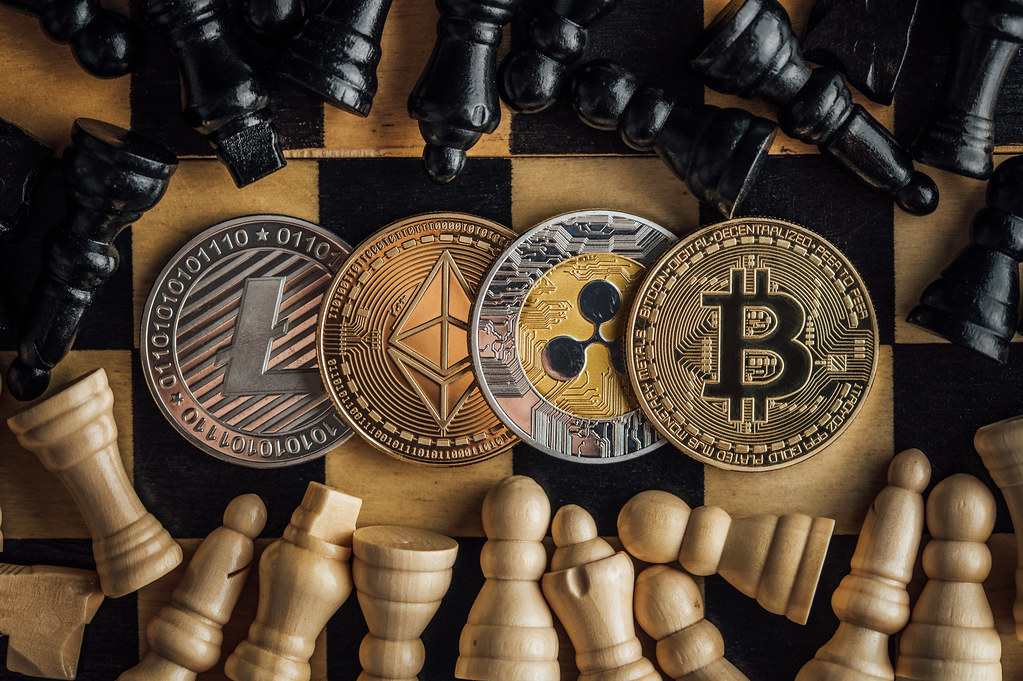An In-Depth Analysis of the Blockchain Gaming Sector and Its Future Potential
GameFi—where blockchain, cryptocurrency, and gaming converge—has sent ripples through the gaming industry. But is this Play-to-Earn evolution a paradigm shift or simply the latest tech craze? Let’s dive deep into the world of crypto gaming and explore where GameFi is headed and why it matters.
What is GameFi? Redefining Gaming Economics
The GameFi movement merges “gaming” with “decentralized finance” (DeFi), allowing players to earn real-world cryptocurrency or NFT rewards through gameplay. Unlike traditional games where in-game rewards are purely virtual, GameFi titles let players actually own, trade, or sell their digital assets and tokens. By leveraging blockchain, these games guarantee transparency, security, and true digital ownership.
Play-to-Earn: Changing the Rules of the Game
Traditional games rely on the pay-to-play or free-to-play model, but crypto gaming flips the script. In Play-to-Earn (P2E) games, players can:
- Earn native cryptocurrencies or NFTs as rewards for achievements, progress, or time invested
- Trade or sell tokens and in-game assets in decentralized marketplaces
- Enjoy transparent, provably fair mechanics powered by smart contracts
This model has opened doors for players worldwide, turning gaming into a potential income stream rather than just entertainment.
Major GameFi Success Stories
Several blockchain games have become household names within crypto circles:
- Axie Infinity: Users breed, battle, and trade Axies (digital pets) while earning Smooth Love Potions (SLP) tokens. At its 2021 peak, Axie Infinity’s economy supported thousands of Filipino players earning more from the game than their local jobs.
- The Sandbox: This virtual world lets users buy land, create games, and monetize digital experiences using the SAND token.
- Decentraland: Players buy, sell, and develop plots of virtual real estate, with user-driven governance managed by the MANA token.
These games showcase blockchain’s promise in delivering real value and ownership to players.
The Tech Driving Crypto Gaming
GameFi operates at the crossroads of several groundbreaking technologies:
- Smart Contracts: Execute secure, automated transactions without intermediaries.
- Non-Fungible Tokens (NFTs): Uniquely identify in-game items, characters, and property.
- Decentralized Marketplaces: Allow open trading of in-game assets across games and platforms.
- Interoperability: Some projects envision items or currencies that work across multiple games, further breaking down old barriers.
This combination empowers both developers and players, turning static games into dynamic virtual economies.
Why Has GameFi Become So Popular?
Several factors explain the explosive growth of GameFi in recent years:
- Player Empowerment: True ownership of digital items and the potential for real-world earnings.
- Open Economies: Decentralized systems enable peer-to-peer trading, reducing developer control over in-game economies.
- NFT Hype Cycle: Growth in NFT interest boosted blockchain gaming’s appeal and brought new investors and players into the space.
- Accessible Monetization: For many, especially in emerging markets, Play-to-Earn provided a new avenue for income.
Challenges and Criticisms: Not All Glitter is Gold
As with any trend, GameFi faces skepticism and significant hurdles:
- Volatile Earnings: Token and NFT prices can swing wildly, leading to uncertain incomes and speculation over gameplay.
- Scam Risks: Some projects have suffered from rug pulls, hacks, or unsustainable structures, undermining user trust.
- Player Retention: Many GameFi projects focus on earnings over gaming experience, sometimes sacrificing gameplay quality for financial incentives.
- Regulatory Uncertainty: Ever-shifting global laws on crypto pose risks to both developers and players.
All these factors mean that while GameFi markets can boom quickly, they can also face steep corrections.
Is GameFi a Passing Fad or Here to Stay?
Let’s weigh the evidence:
What Favors Longevity?
- Institutional Interest: Major gaming studios and even tech giants are exploring NFTs and blockchain integration.
- Community Ownership: DAOs (Decentralized Autonomous Organizations) and play-to-earn structures reward loyal users, fostering engaged communities.
- Continued Innovation: Projects continue to push boundaries with more immersive graphics, richer stories, and better tokenomics.
What Holds It Back?
- User Churn: Many users are “playing” for profit rather than fun, so if rewards cool off, interest can slip quickly.
- Skepticism from Gamers: Hardcore gamers often criticize GameFi for prioritizing money over fun and fair play.
- Technical Complexity: Crypto wallets, gas fees, and understanding blockchain still remain barriers for mainstream users.
The Future of Blockchain Gaming
Despite volatility, the GameFi sector shows strong signs of maturation:
- Sustainable Models: Leading developers are now focusing more on gameplay quality and sustainable economic loops.
- Hybrid Approaches: Traditional gaming companies are experimenting with blockchain features that don’t compromise fun.
- Metaverse Integration: GameFi is feeding into broader metaverse ambitions, where digital items move between games and virtual experiences.
- Regulatory Clarity Ahead: As governments clarify crypto laws, the sector could see a new boom in responsible innovation.
The next generation of GameFi will likely revolve around high-quality games with real-world utility, attracting gamers and investors alike.
How to Get Started in GameFi
Ready to try out crypto gaming? Here’s what you need:
- A Crypto Wallet: Most projects require you to connect a wallet like MetaMask.
- Research the Game: Look for user reviews, community activity, and sustainability of in-game economies.
- Be Security Smart: Only use trusted platforms and never share your private keys.
- Set Realistic Expectations: Earnings potential can be real but varies greatly. Approach GameFi as entertainment with a possible upside.
Conclusion: Play-to-Earn or Passing Fad?
Crypto gaming—at the intersection of games, blockchain, and finance—is more than just hype. While the sector is still evolving, it’s clear that some form of GameFi is here to stay. The focus now is shifting to player enjoyment, fair rewards, and long-term sustainability, signaling bright prospects for the future of blockchain-based gaming.
If you’re curious about earning while gaming and want to shape the future of entertainment, GameFi is worth exploring. Just remember to play safe, do your own research, and keep both fun and finances in view.
Ready to experience the next revolution in gaming? Dive into GameFi and discover a new world where your skills can turn digital fun into real rewards! Start your blockchain gaming journey today!






